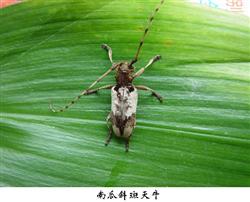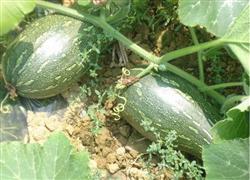Temperature Management of Pumpkin

The seedling stage of pumpkin cultivated in winter and spring in northern greenhouse is in the cold winter month with the shortest sunshine and the lowest temperature in the whole year, so it is very difficult to cultivate. Low temperature and low light has become the main factor restricting the growth of pumpkin. Therefore, how to increase the light, increase the temperature and maintain the temperature is the key to successful cultivation. In the solar greenhouse with a span of 7 to 8 meters, in order to increase the daylighting surface, the roof ridge shall not be less than 3 meters; the rear wall can also hang a reflective curtain to enhance indoor lighting; select EVA dripless film (ethylene-vinyl acetate polymer) with good light transmission performance as greenhouse film; often clean the greenhouse film dust to keep the greenhouse film clean and transparent. The main purpose of thermal insulation is to increase the thickness of the wall (not less than 1 meter), dig cold ditches and cover with good thermal insulation performance. The greenhouse film can be covered with two layers of grass or one layer of grass and one layer of paper quilt. In the area of 43 °north latitude, quilts or chemical fiber blankets are used for better heat preservation. In the early stage of plant growth, on the one hand, it is necessary to prevent root retting and quenching caused by low temperature and high humidity, and on the other hand, it is necessary to prevent overgrowth caused by high temperature, high humidity and weak light. In terms of temperature management, in the early stage of growth (designated to be planted to the first fruit to be imprisoned), the suitable temperature was 25 ℃ in daytime and 16-18 ℃ at night, and in the middle and later stage of growth (from fruit setting to maturity), the temperature could be raised to 27 ℃ in daytime and 17 ℃ at night to accelerate fruit growth and development to facilitate early ripening and high yield.
- Prev

What if a large number of pumpkin leaves turn yellow?
The scientific name Apomecynahistrio (Fabricius) belongs to Coleoptera Cerambycidae. Synonym ApomecynaalboguttataMegerle. Alias four-spotted pumpkin longicorn beetle, melon vine longicorn beetle, stem driller. It is the main pest of melon vines. Distributed in Guizhou, Yunnan, Sichuan, Guangxi, Guangdong, Hunan, Zhejiang, Fu.
- Next

Cultivation techniques of pumpkin in open field
The main results are as follows: 1. Chinese pumpkin must be selected for variety selection and seed treatment, and the excellent local varieties are the best, such as yellow ladle pumpkin, grinding plate pumpkin, pillow pumpkin and long-stalked pumpkin. After 1-2 days of drying, pumpkin seeds were scalded with 50 ℃ warm water for 5-10 minutes, and then soaked to accelerate germination. 2. Fertilization and soil preparation.
Related
- Where is it suitable to grow horseradish in China? it is expected to see the middle altitude horseradish in Alishan.
- How to prevent tomato virus disease reasonably? (Control methods included)
- Many people like to plant towel gourd on the balcony. What are the main points of this method and management?
- What crops can chili peppers be mixed with?
- Fertilization techniques and matters needing attention in Tomato
- What are the grafting techniques for peach seedlings in spring?
- Harm and control methods of root swelling disease of Chinese cabbage
- What are the pests of sweet potatoes? How to prevent and cure it?
- Symptoms, causes and Control methods of navel Rot in Tomato
- The cause of "Cucumber rotten bibcock" in Farmers' planting Cucumber and its Control Plan

